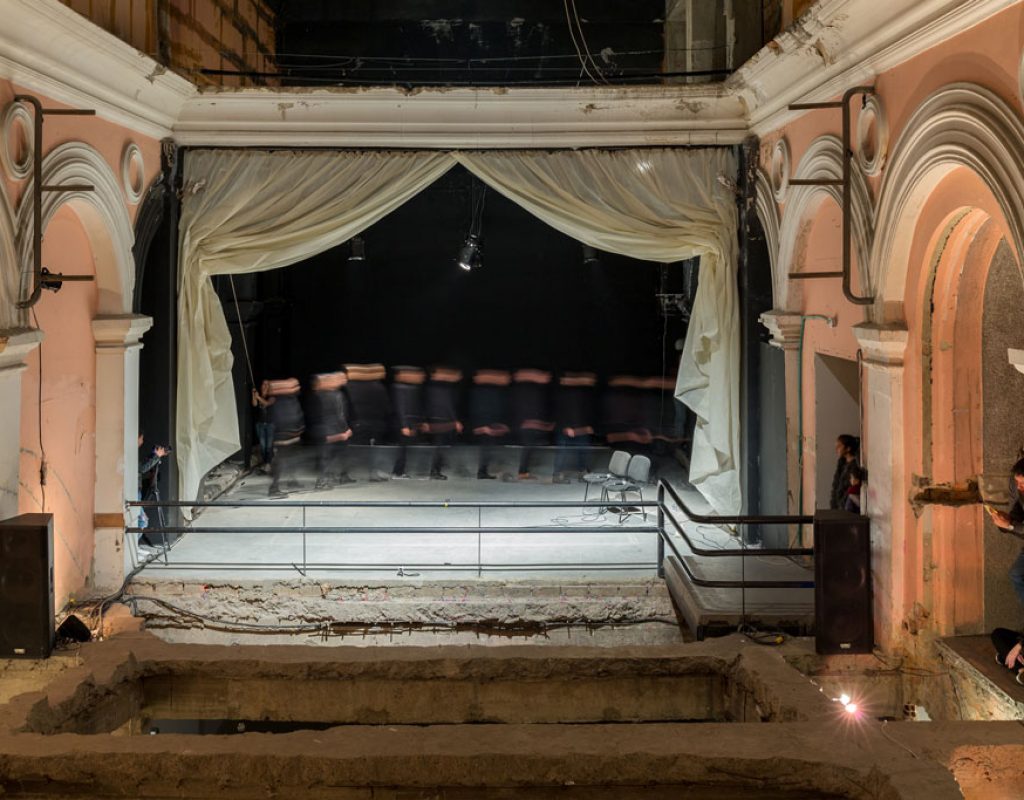
Cuatro actos
Curator
Venue
In collaboration with
DETALLES DEL PROYECTO
Cuatro actos (Four Acts) is a project where the artist approaches the theatrical language, its mechanisms, and its communication codes as a strategy to reveal and hide a specific construction of reality. The whole approach is based on the interest in the tools that build a staging. The curtain was chosen as the element that opens the representation, and that hides the artifices that make up the work: pulleys, ropes, counterweights, a whole system to open and close the mouth of the stage.
The project focuses on the idea of reveal and hide, embodied in the same curtain, and employs a series of actions to highlight some processes of historical and political concealment that have been recurrent in Latin America.
The exercise of opening the curtain is a way of unveiling but also of resisting, of “getting up” as a way of confronting the official version and insisting on other truths, other narrations, and other discourses.
This project was presented as a piece in process composed of three parts: the work of making the curtains open to the public; a scenario in which four collaborative actions occurred within the curtains; and the documentation of each of those actions. The four acts were developed in collaboration with national artists.
These actions are directly linked to the relation between sound and language disruption, machines and artifacts for communication, reading and writing, spoken and written text, education, roles of gender, translation and interpretation mechanisms, and the remixing of different data and processes — all these in dialogue with the interests and practices of each of the invited artists.
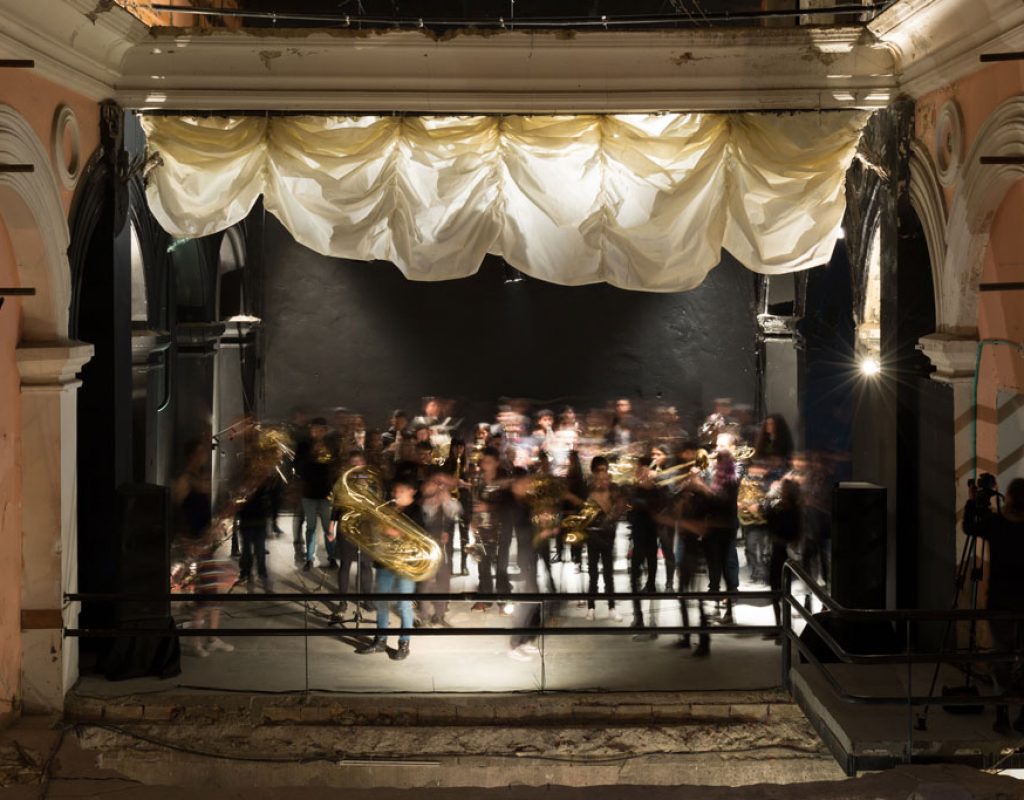
First Act from Four Acts
DETALLES DEL PROYECTO
First Act from Four Acts
The raven paradox – with Ana María Montenegro
This act refers to the processes of hiding the truth and the apathy around the deaths and political disappearances that continue to happen in Colombia in particular, and in Latin America in general.
The act begins with the reading of a text that refers to the paradox of the crow, also known as the paradox of the negation, continues in a monologue that brings together different voices, data and testimonies until the symphonic band bursts in uniting with the voice and its speech, to then roar in unison “Death, death to the state, death to the state of apathy of the state, death to the state of apathy of the state before death”.
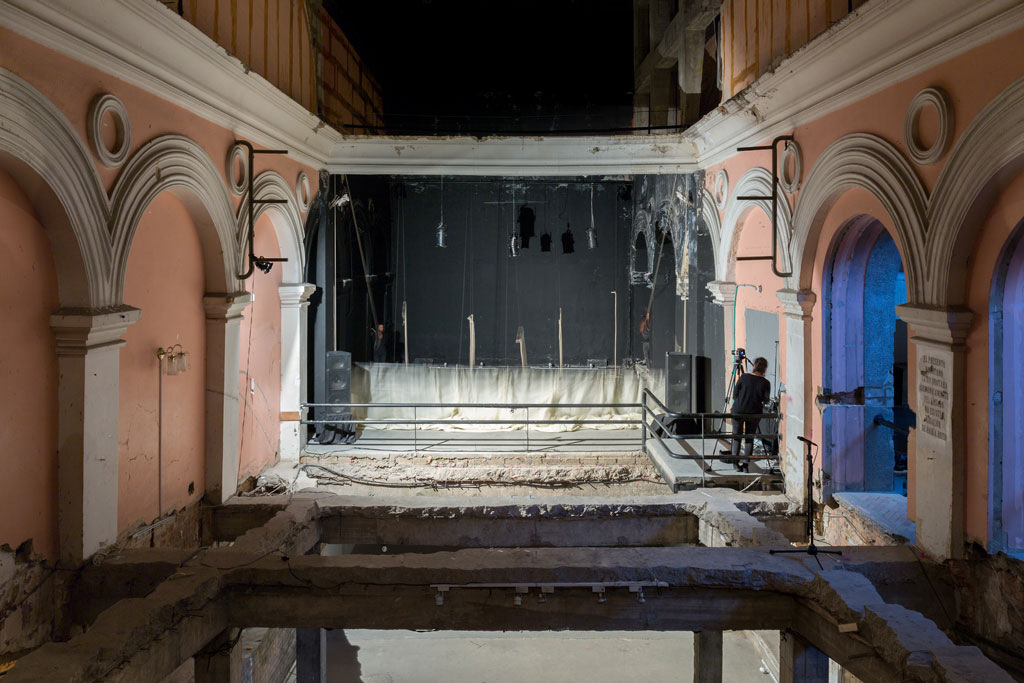
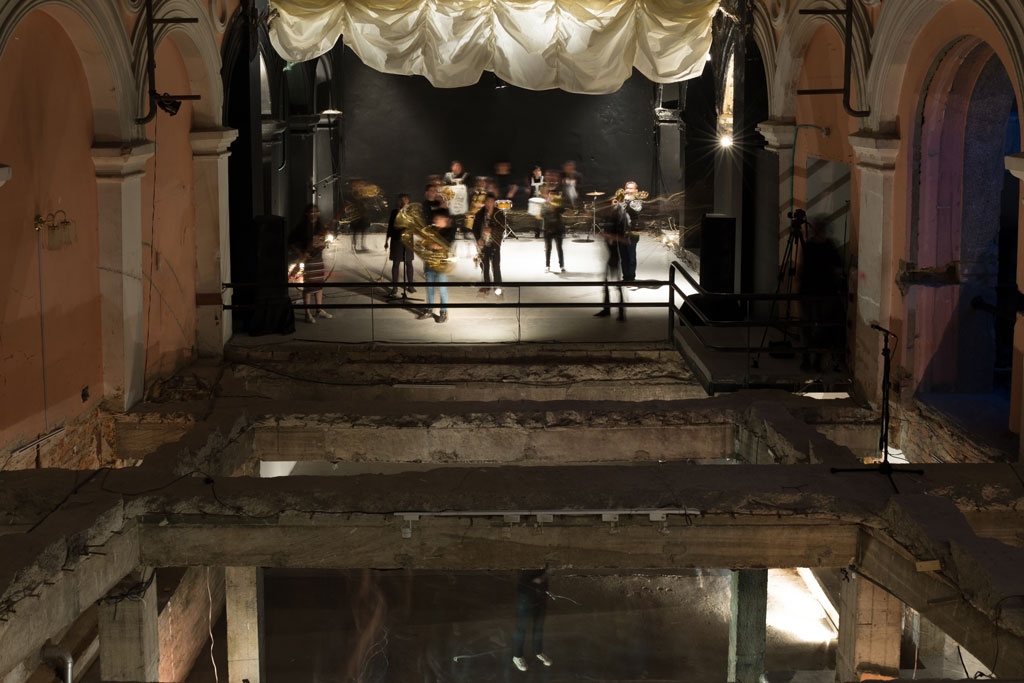

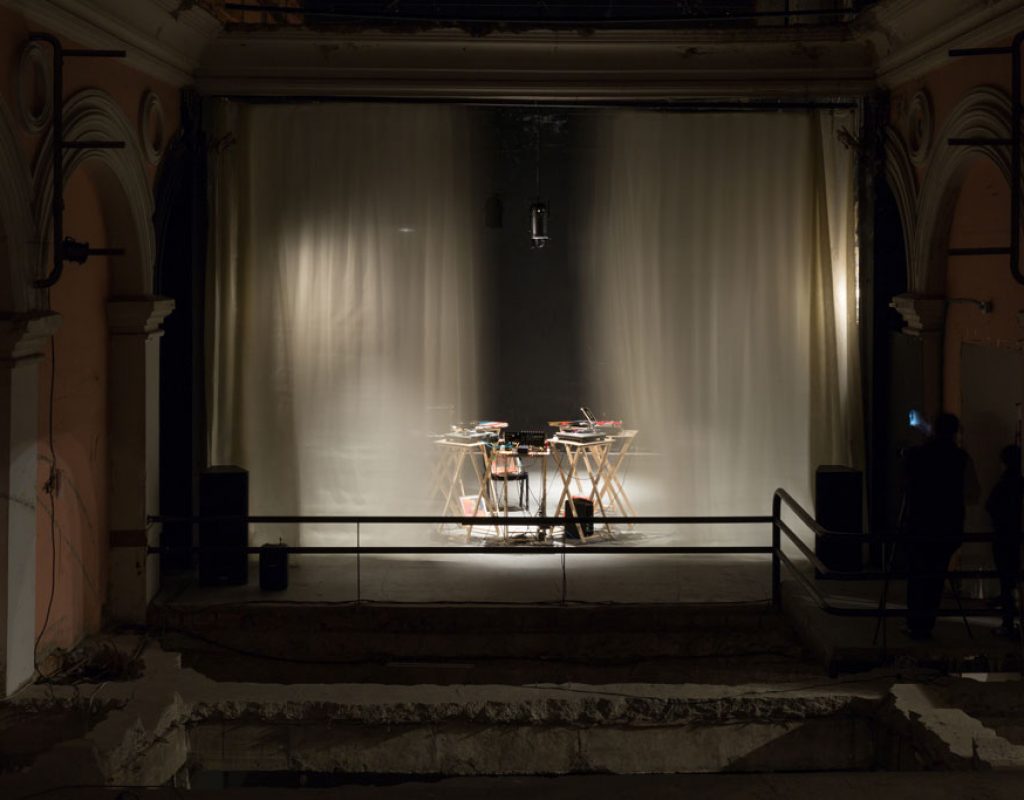
Second Act from Four Acts
DETALLES DEL PROYECTO
Second Act. From Four Acts
Falsonorama – Mario Galeano with the participation of Camilo Jaramillo
For this second act it was presented a fiction in which a sound cartography of Colombia is proposed from which it would be possible to think of other mixtures and remixes that overlap the “official” distribution of the territory and the people.
This sound mix was performed live using a series of player artifacts and sound files. The selection of texts were based on certain but unusual stories, which were recovered from archives of the National University Library of Bogotá, where Moors, Amazonians, dragons, inquisitors and liberators are involved.
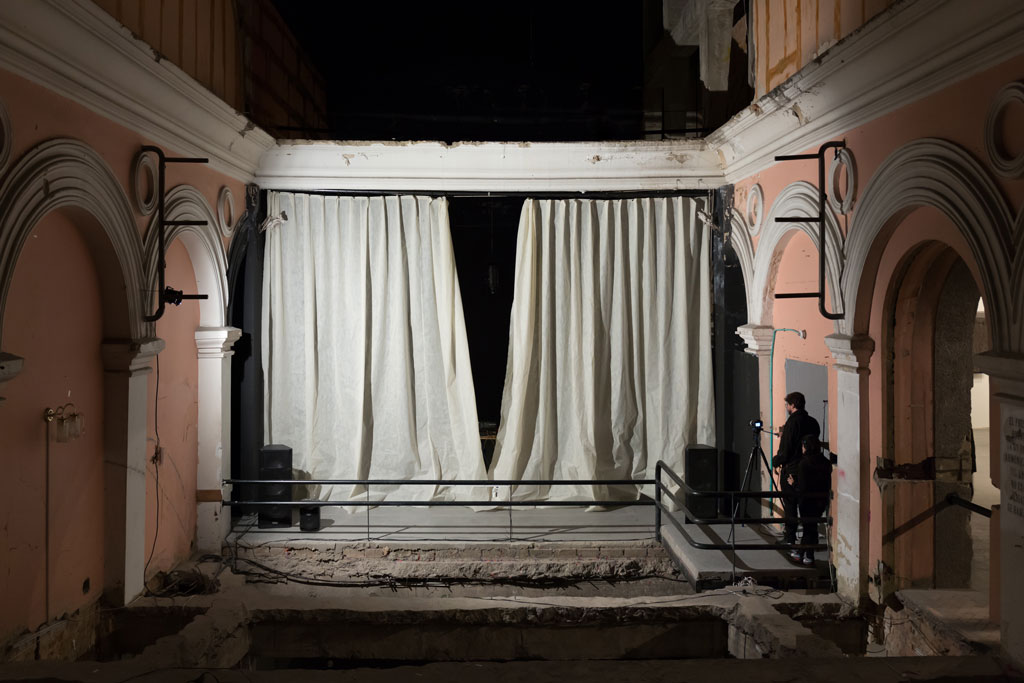
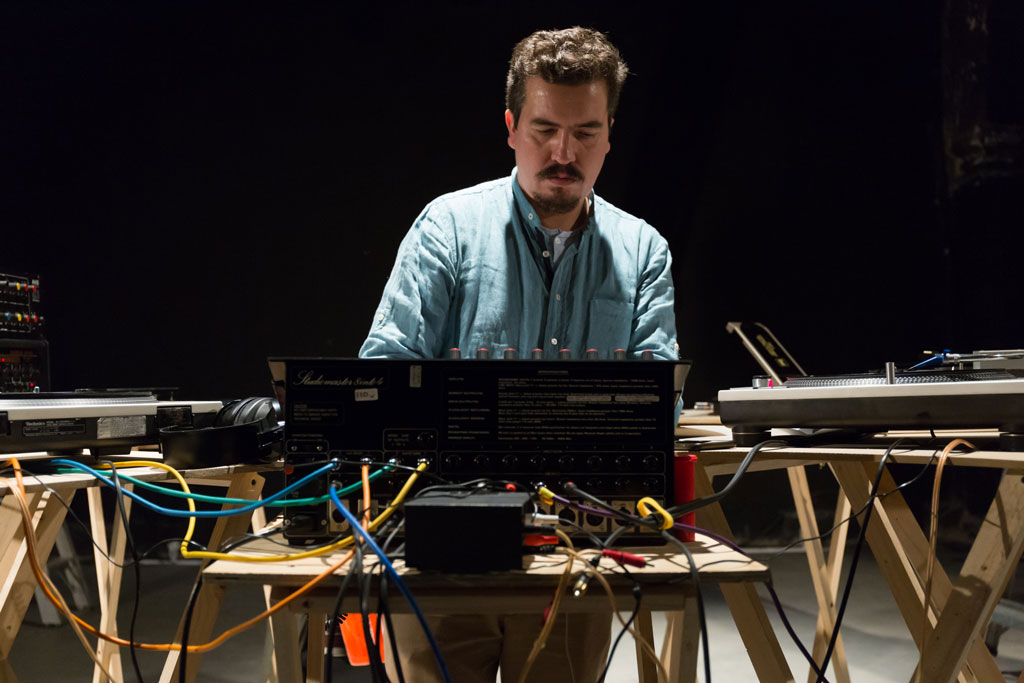
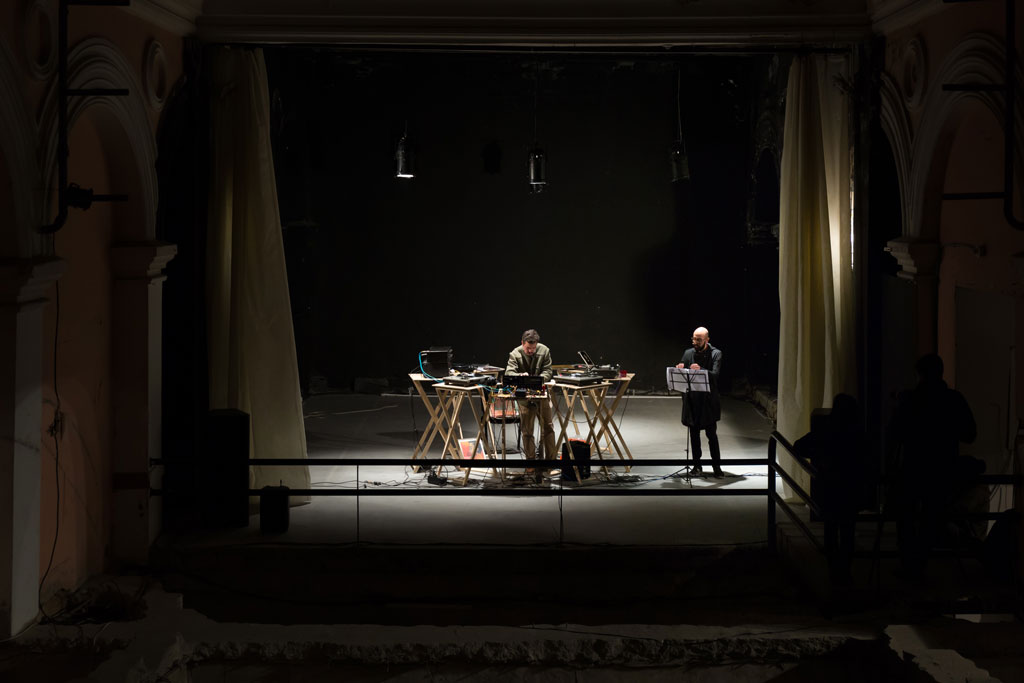
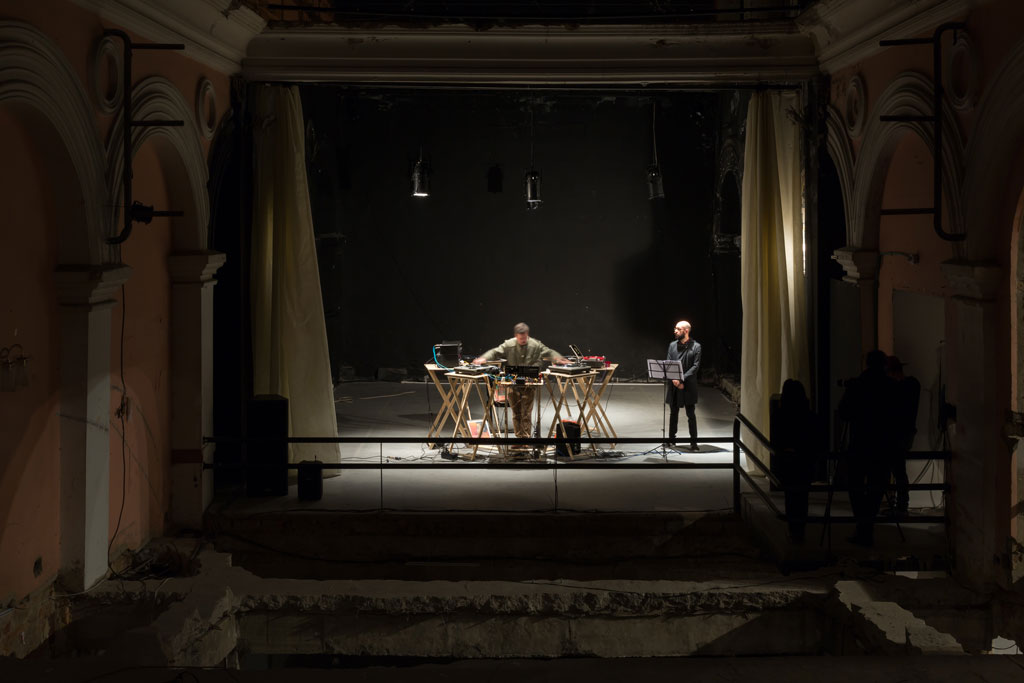
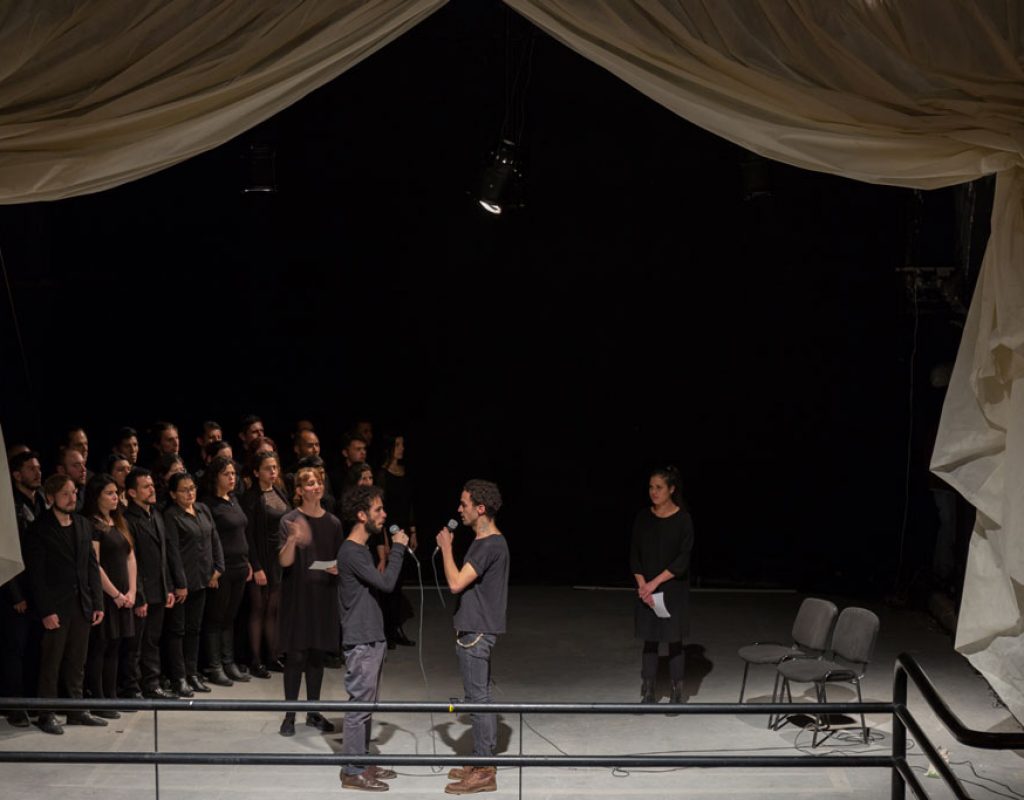
Third Act from Four Acts
DETALLES DEL PROYECTO
Third act: Lessons and demonstrations – Luisa Ungar with the special participation of the Pneuma Choir.
In this act we present the findings of an investigation based on the education books of the 19th century and the ways in which they relate to choral processes, non-verbal languages and instruction in the management of the body.
The action begins with a lesson of correct pronunciation in which the instructor is gradually being ridiculed by his assistants and by the chorus that stops obeying until taking over the stage.
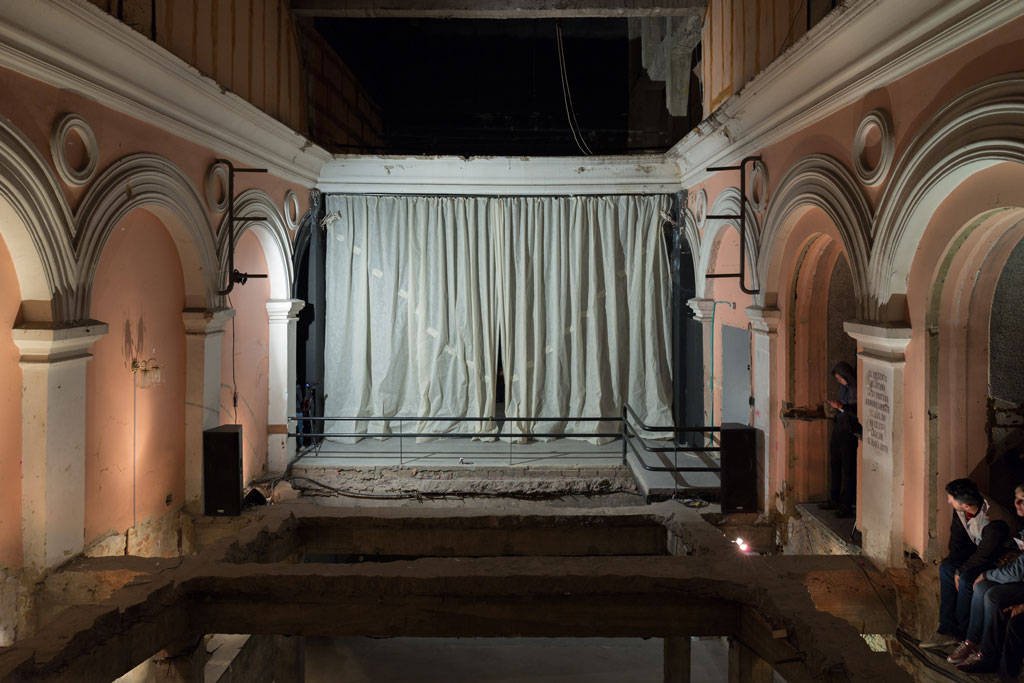
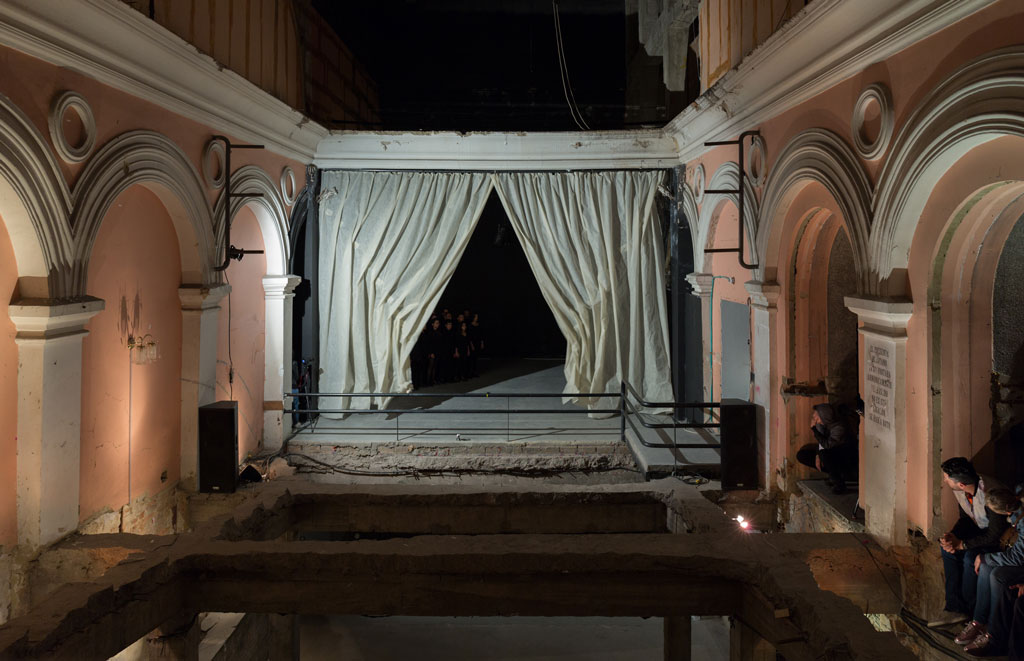
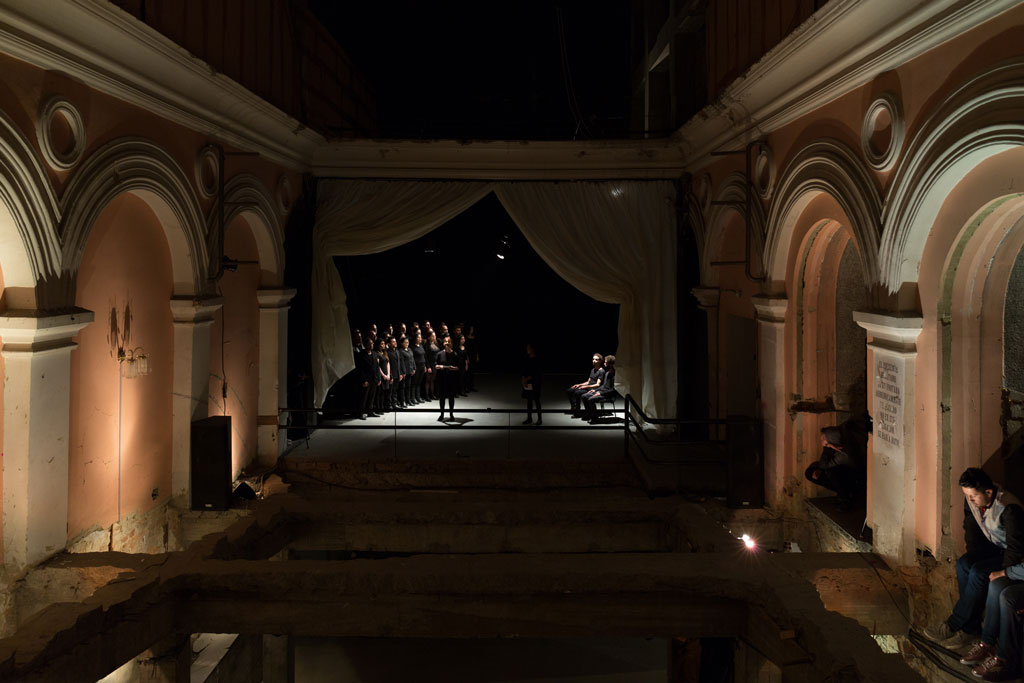
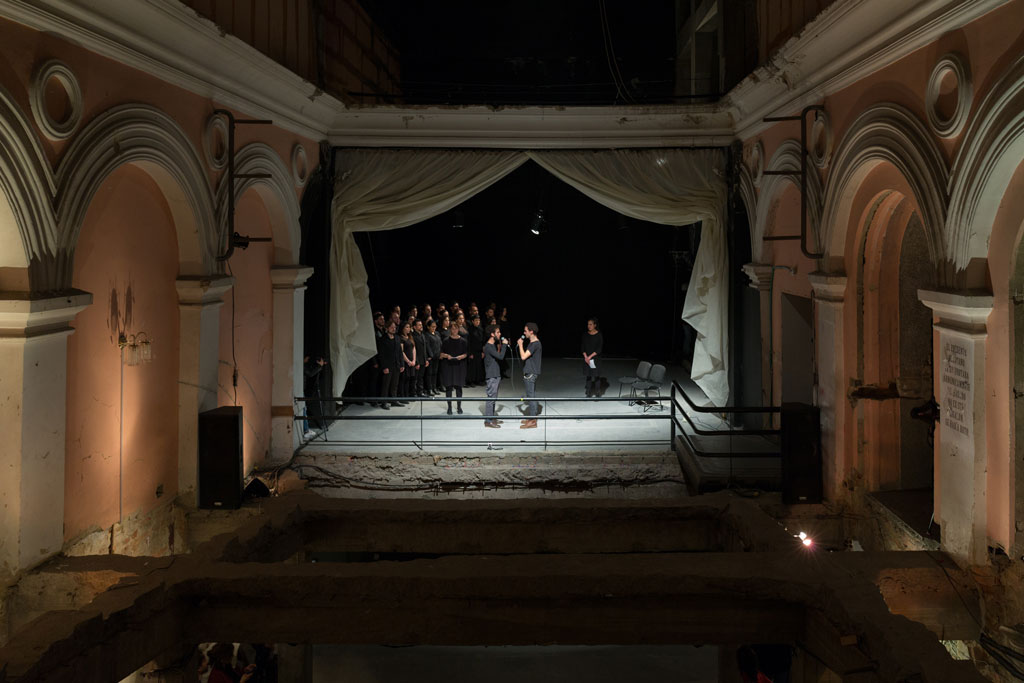
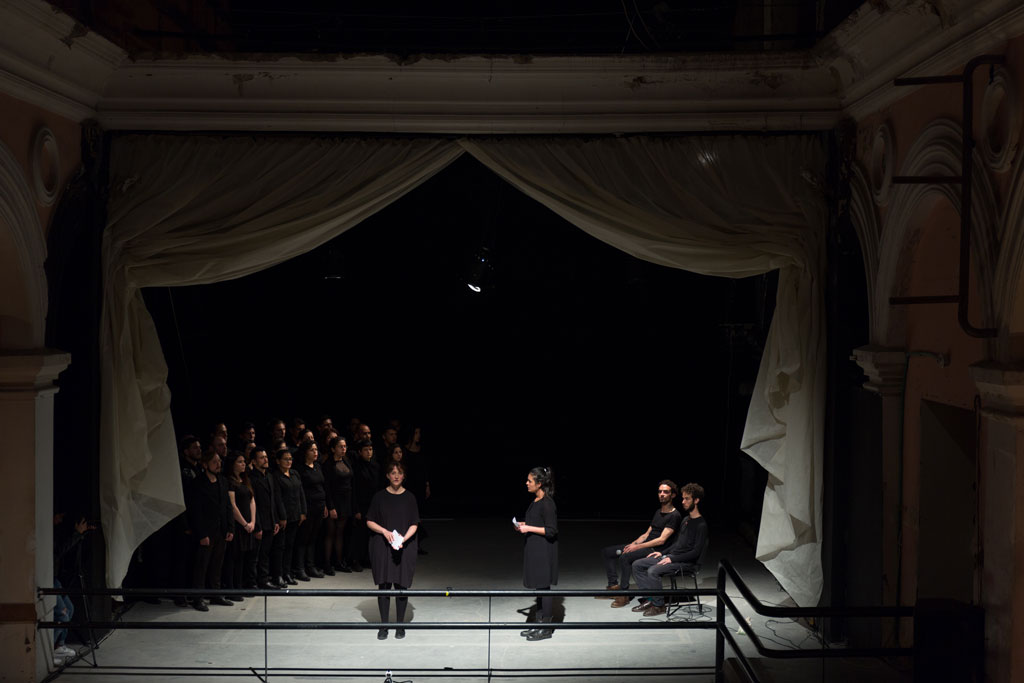
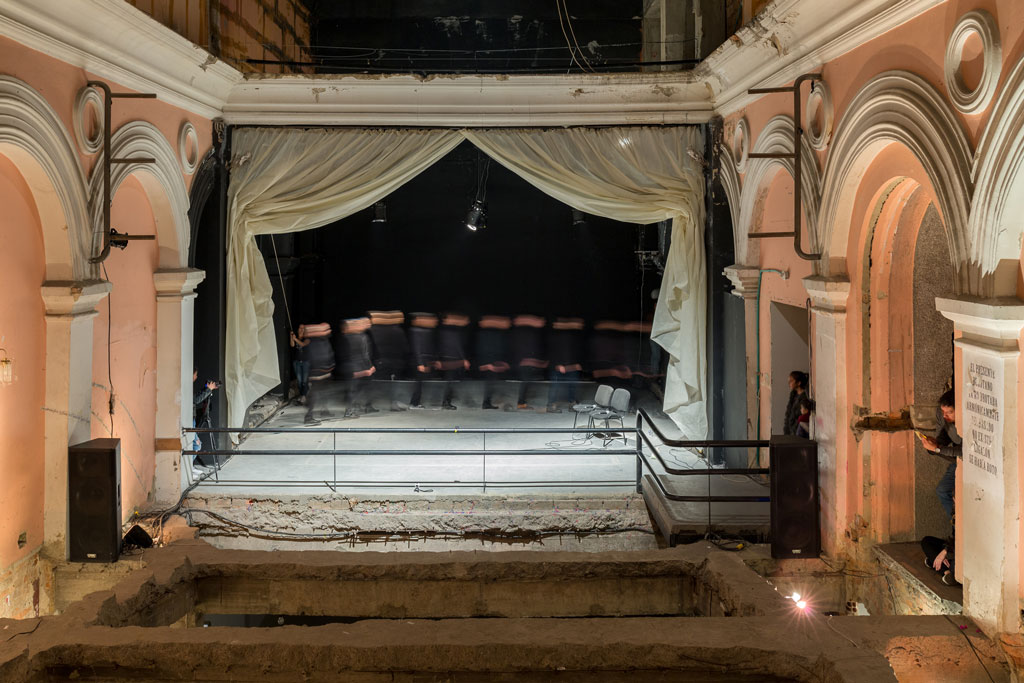
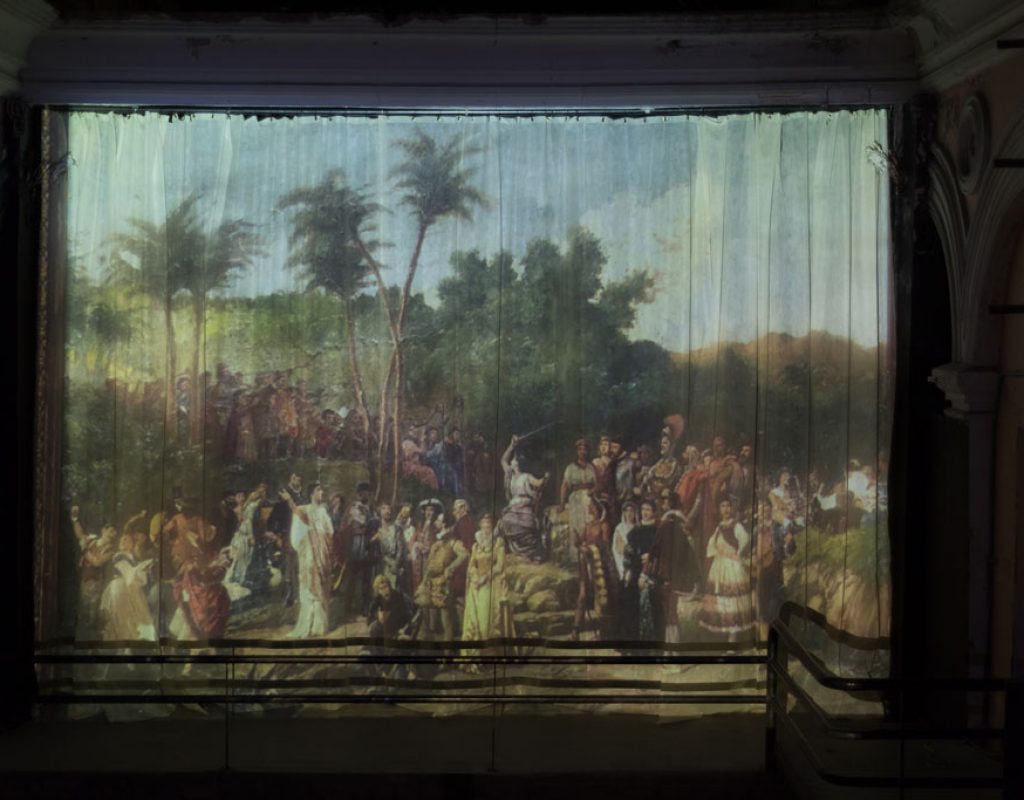
Fourth Act from Four Acts
DETALLES DEL PROYECTO
Fourth act: Natural Utopian – Alberto Baraya, Nueve Voltios and Tania Candiani
The fourth act explores the action of naming as a mechanism of appropriation and colonization that has served to build specific discourses, from which forms of representation are constructed that make some visible and hide others.
The starting point is the story of the painted curtain of the Teatro Colón in Bogotá, to which the peasants were “erased” by presidential order. The piece is structured in three times or scenes: The curtain of Gatti and the negation of the indigenous, the twelve units of the landscape, and the destruction of the landscape.
Live video editing processes, pictorial processes with chroma, text recordings, voice synthesis and live sound mixing were used.
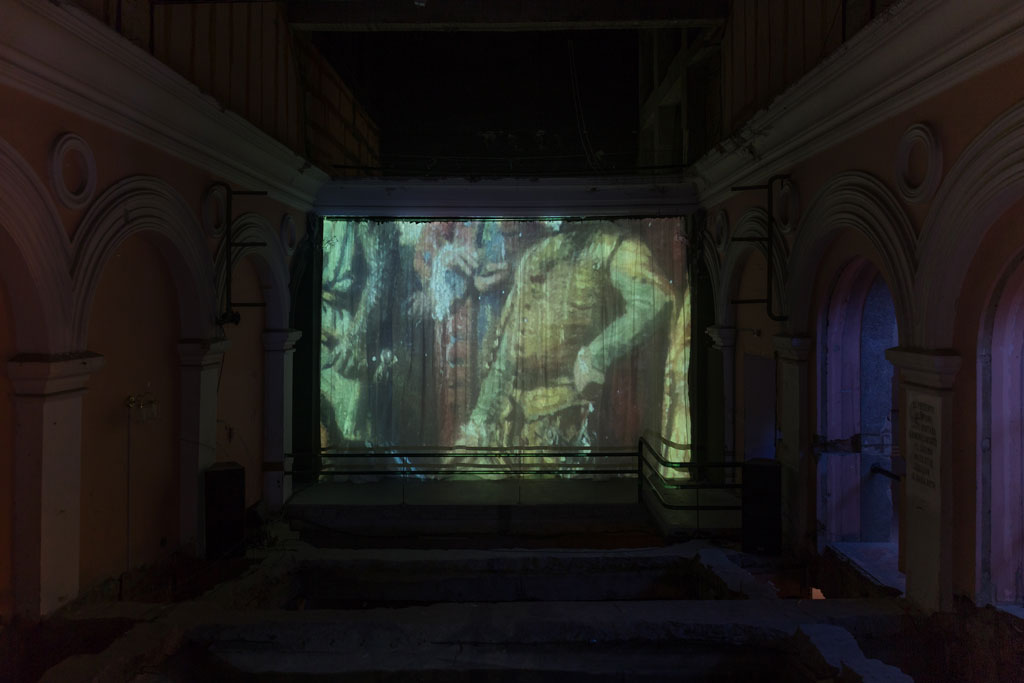
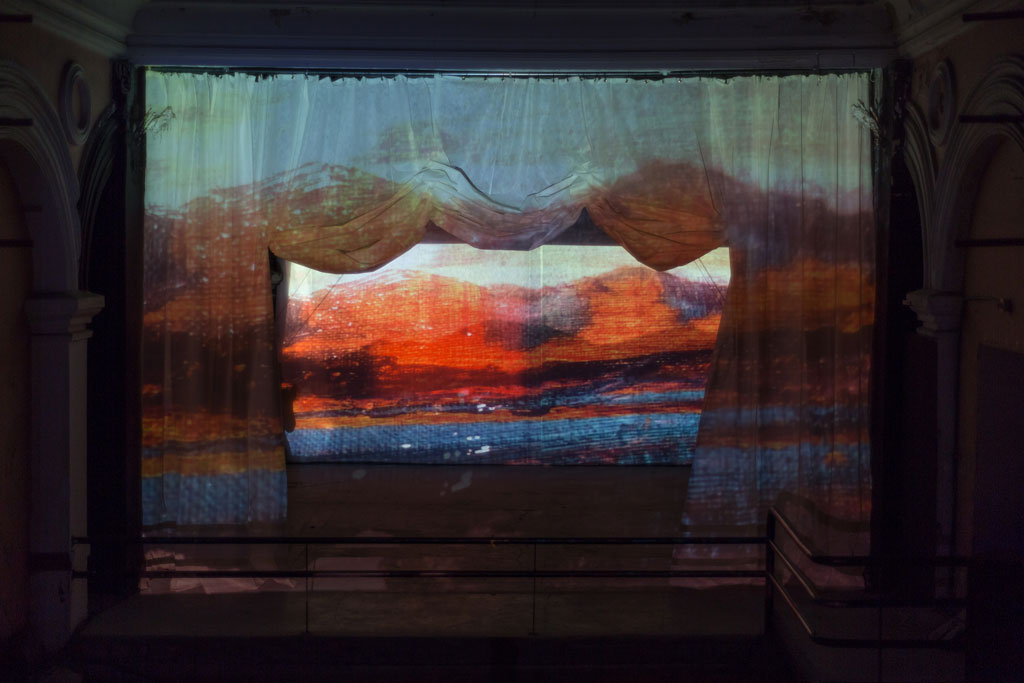
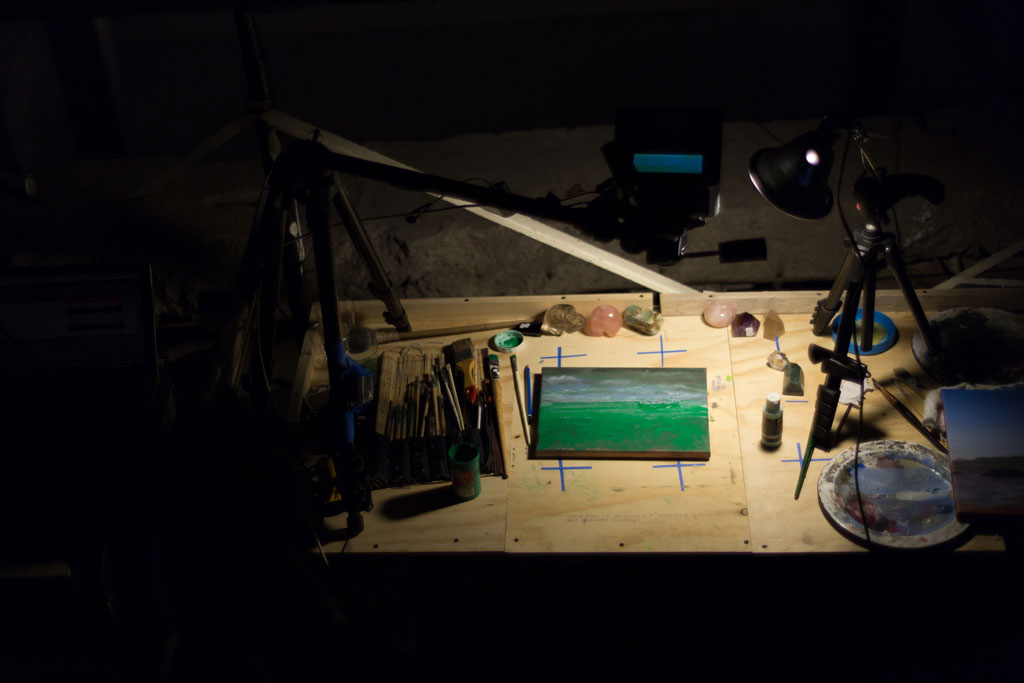
DETALLES DEL PROYECTO
DETALLES DEL PROYECTO